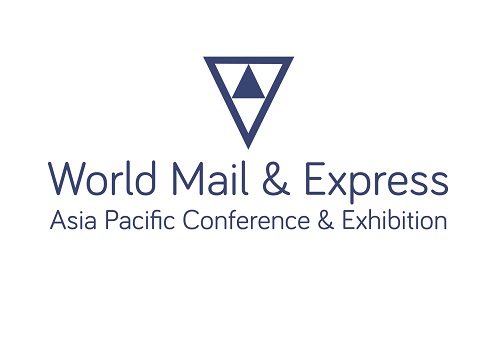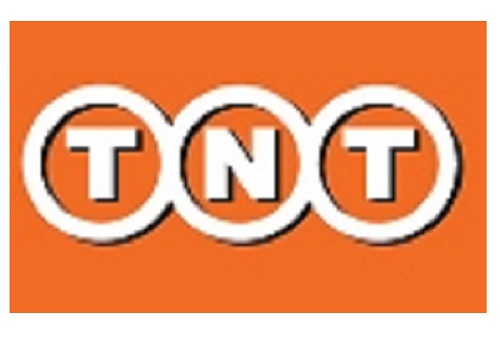
The lynchpin of integrated communications
A new paradigm for postal operators, by Ulisse del Gallo, Accenture Global Postal Industry Adjusting to changing market conditions has become second nature to postal organizations, but to achieve high performance in today’s communications landscape demands a radical shift in the way that postal operators define their role. Accenture considers the implications of its vision of the postal operator as the pivotal player between senders and receivers of digital and physical communication.
Mind the gap
The postal market has changed beyond all recognition. Technology has created a new communications landscape that puts the cost of physical information management into sharp focus and makes for rapidly diminishing physical mail volumes. Additionally, the financial crisis and global meltdown has forced postal operators to look for innovative and cost-effective solutions to address the changing needs of their customers.
Customers and consumers of postal services are also adapting to change and making new demands on their postal operators. Customers are looking to communicate more efficiently and cost-effectively and to maximize returns-and consumers, used to social networking, e-mail and instant messaging expect access to information and services in real time or at their convenience. At the same time, they are coping with unprecedented levels of information.
Postal organizations the world over are asking themselves how they can maintain their credibility and relevancy as a key communications and marketing channel. How do they close the gap between the services they provide and the rapidly evolving needs of their customers and consumers-the senders and recipients of communications? The pressure is on for postal organizations to leverage what is still one of the most powerful distribution, services and marketing tools in the world today and find their relevancy as universal communication brokers in this rapidly evolving environment.
How do postal organizations regain relevancy?
While the need to embrace digital communications is clear to all, Accenture believes that the high-performance businesses of tomorrow will do much more than simply leverage technology to deliver mail in addition to traditional physical delivery. Accenture’s vision is based on its long-term, accredited High Performance Business research program aimed at understanding high performance in specific industries, including the postal industry. We define high performance as enduring, sustained, superior performance relative to peers, as measured by a set of widely accepted financial metrics.
Accenture High Performance Business research is revealing ways organizations can orient themselves in this confusing environment. It confirms the fact that digitization, customer-centric solutions and simplification of the business operating models are going to be key drivers for postal organizations in coming years. As far as digitization is concerned, to achieve high performance, Accenture believes that postal operators need to integrate physical and digital communication and that they also need to build seamless solutions that manage the borders between the digital and physical world. To provide customer-centric solutions, postal operators need to enlarge their focus to consider consumers on the receiving end of the mail process as well as their traditional customer base-the senders of information. If they focus on these two priorities and put the operating models in place to support them, Accenture sees an opportunity for postal operators to become the main and most complete service provider for any business or individual with communications needs (see figure below).
Finding a new role in the digital world
Postal operators have long been aware of the need to embrace digital communications, and many are moving in the direction of document and information management. However, the general approach tends to be managed as a defensive response to the drop in physical mail volumes rather than a comprehensive strategy to integrate traditional and innovative services. Often, this puts postal operators in direct competition with service companies that already operate in the digital mail space. While those post operators that have started document management businesses report double-digit growth in that area, growth is seldom sufficient to make up for rapidly decreasing volumes of physical mail. Typically, document management is set up as a subsidiary to mainstream postal activities, employs less than 100 employees and generates between 1 and 3 percent of post groups’ revenues. Only a small number of postal operators have taken a more aggressive view, developing new operating models that integrate physical and digital channels. What is more, postal organizations that have entered the document management space and are developing multichannel service offerings are concentrating primarily on the management of outward mail. Only a few players have taken the hybrid model-that combines physical and digital mail-to the next level. These organizations offer multichannel receipt and delivery, allowing both originators and recipients to choose the delivery mode.
Pushing the envelope
Accenture’s vision for delivering high performance goes much further and sees a role for postal operators at the heart of this multichannel communications landscape. Sitting at the axis between senders and receivers of information, postal operators are well-placed to consolidate and manage all incoming and outgoing communications channels, streamlining the complexity of cross-channel communication to deliver efficiencies and cost savings to consumers and help consumers with channeling, managing and storing increasing volumes of incoming mail. The postal operator would be positioned centrally in the communications chain as the integrator of communication, accepting it in any physical or digital form from the sender and delivering it securely to the recipient in a format, at the address (physical or digital), and at the time selected by the recipient. Today, information is dispersed across several channels and the consumer needs to retrieve the relevant data from several digital and physical locations-bills and statements published in different websites for example, or sent by mail-creating complexity and inconvenience. It is the relationship with the consumer that really differentiates this approach and is central to its success. Over time, if postal operators can build trust with consumers, the potential exists to expand services to this market, perhaps by filtering and funneling communications based on stated preferences.
A fully integrated approach to communications delivers benefits at every level. While the postal operator reasserts its relevance and centrality in the communications process and enjoys new revenue streams, customers are able to reduce their document management costs, more efficiently use their workforces and offer measurably improved levels of service quality and timeliness. Centralized printing, franking and inserting enables companies to save money while leveraging the benefits of physical mail. Additionally, printing mail close to the recipient substantially reduces transportation costs and carbon emissions-addressing the need for sustainability. For the first time, consumers gain control over what communications they receive, when, where and how and the convenience of unified, integrated and timely delivery.
Market potential
Once they are developed and integrated into postal operations, the new integrated communications services will become part of the core postal business, and can drive significant revenue. Growth will be driven by the expansion of digital services to the consumer mass market, increasing the volume of communications handled by the postal operator and compensating for losses suffered as a result of digital substitution in communications. Lower volumes of physical mail will translate into a radically different cost structure with increased flexibility, carefully managed sorting and transportation activities, and a specialist delivery workforce that focuses on higher-value products that still need physical delivery.
If postal operators are successful in developing enduring, trust-based relationships with consumers, there is considerable potential to leverage this trust to create new revenue streams as they channel selected communications on behalf on customers. What is more, a strong relationship with consumers would consolidate postal operators’ position with customers who would see them as a primary marketing route to the consumer market.
Rising to the opportunity
Postal operators have unique strengths that position them to exploit this opportunity. They have universal reach into every household and business within a nation and unmatched physical and digital networks. They are commercially neutral and have positive brand attributes that associate them with secure and protected communication. Postal operators that also own post banks or manage payment services have the experience and credibility to provide seamless communication in financial transactions.
This is not to say that becoming the lynchpin of integrated communications is without its challenges. This vision of postal operators represents a paradigm shift affecting every level of the organization. When looking for a partner to support this transformation, postal operators will need to look beyond a pure technology-driven approach or one based only on consultancy. Taking an approach that combines consultancy with technology, together with human capital and change management skills directly relevant to the postal industry will be critical for achieving high performance. Time to market can be accelerated by accessing capabilities as a service from a third-party partner and leveraging offshore business process outsourcing.
This new approach implies having strong information and communication management capabilities, seamlessly integrated with the current logistics capabilities, and tools to manage the digital/physical border. Postal operators need to continue to take advantage of innovative technology, not only by squeezing more productivity improvement from already automated areas, but by also taking advantage of broader capabilities and complex and integrated approaches to the automation of different segments of postal operations and services to be able to meet the demands of this new approach.
Furthermore, this new approach demands fundamental shifts in several areas-from physical delivery to communication management and from volume-based to value-based pricing, for example. It also requires capabilities in marketing and technology that are not inherent to most postal operators, acquisition and merger or partnership management skills to set up new solutions, the ability to make the required investments and secure the right talent and an understanding of the value and integration requirements of new technologies. A key area in embracing the consumer market and marrying the objectives of both customer and the consumer will be a well-designed customer relationship management capability.
A new role for postal operators
Postal organizations are looking to achieve high performance by redefining their role in a world increasingly dominated by digital communication. The quest to regain relevance and claim competitive advantage has led postal operators to develop operations that embrace digital as well as physical mail. These hybrid operations tend to be small scale, remote from the mainstream postal operations and almost exclusively limited to the outbound side of the mail delivery equation. Accenture believes that an opportunity exists to expand this hybrid model to embrace the recipients of inbound mail and create a truly integrated communications process. Postal operators are well-placed to position themselves at the core of this process, provided they are ready to effect and embrace significant change across the entire organization.













